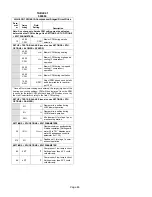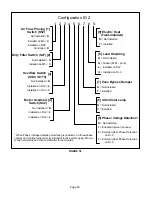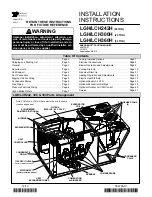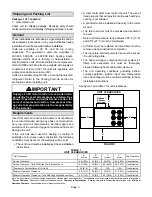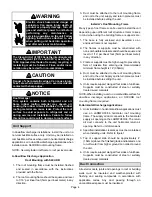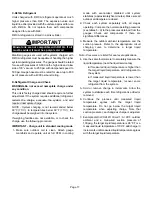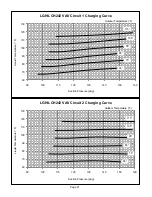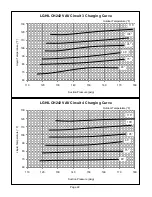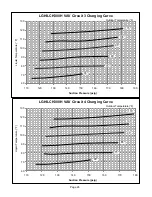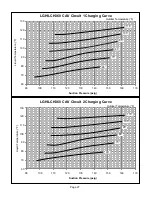
Page 12
FIGURE 16
PULLEY ALIGNMENT - NO TENSIONER
BELT
BLOWER
PULLEY
MOTOR
PULLEY
NOT ALIGNED
ALIGNED
BELT
BLOWER
PULLEY
MOTOR
PULLEY
NOT ALIGNED
ALIGNED
TENSIONER
PULLEY ALIGNMENT - WITH TENSIONER
FIGURE 17
BLOWER ASSEMBLY - WITH TENSIONER
FIGURE 18
TENSIONER
TENSIONER
BODY NUT
MOUNTING
BOLT
ALIGN
MARKS
E-Check Belt Tension (Models Without Tensioner)
Overtensioning belts shortens belt and bearing life.
Check belt tension as follows:
1- Measure span length X. See figure 19.
MEASURE BELT TENSION
FIGURE 19
DEFLECTION 1/64” PER INCH OF SPAN
OR 1.5mm PER 100mm OF SPAN
FORCE
2- Apply perpendicular force to center of span (X) with
enough pressure to deflect belt 1/64” for every inch
of span length or 1.5mm per 100mm of span length.
Example: Deflection distance of a 40” span would be
40/64” or 5/8”.
Example: Deflection distance of a 400mm span
would be 6mm.
3- Measure belt deflection force. For a used belt, the
deflection force should be 5 lbs. (35kPa). A new belt
deflection force should be 7 lbs. (48kPa).
A force below these values indicates an
undertensioned belt. A force above these values
indicates an overtensioned belt.
F-Field-Furnished Blower Drives
For field-furnished blower drives, use the tables on
Page 13 and Page 14 to determine BHP and RPM
required. Use the Drive Kit Specification table on
Page 14 to determine the drive number. Reference the
manufacturer's model numbers in table 4.

